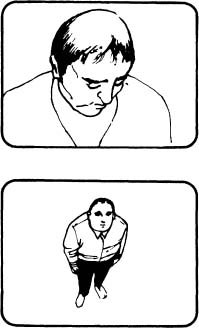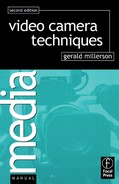There are a few people whom the camera loves! Somehow, no matter how harsh the lighting, however sparse the make-up or critical the camera’s scrutiny, these people always look great! But for most of us, the camera has the ability to misshapen and distort our features, until even our nearest and dearest are lost for words.
Let’s see how the camera manages to emphasize physical shortcomings and distort one’s appearance.
Since a narrow-angle lens appears to compress depth, and a wide-angle lens to exaggerate depth, it is not surprising that your choice of lens angles can have a considerable influence on the way three-dimensional features are reproduced. Try for yourself, the effects of using an inappropriate lens angle on a willing subject.
• Wide-angle – If you get too close with a wide-angle lens, a person’s nose and chin will become prominent in a full-face shot; the head’s roundness will be emphasized and their forehead will recede. The result is so grotesque, that you are unlikely to use this technique for serious portraiture! However, when you are shooting in very restricted surroundings (e.g. an elevator) you may well be tempted to use a close wide-angle lens, just in order to get the shot … so be warned!
• Narrow-angle lens – It is sometimes argued that for certain types of face (e.g. people with deep-set eyes) narrower lens angles produce more attractively proportioned features. But the facial compression and loss of modeling that very narrow lens angles produce in close-ups of distant people, is hardly flattering. In full-face shots, the nose tends to squash, while the forehead and chin look more prominent. The overall flattening effect resembles that of a photo cut-out. Notwithstanding these limitations, when you need close shots on a distant camera, distortions of this kind just have to be accepted.
The height of the camera’s viewpoint can affect a person’s appearance in several ways. Shots that look down on someone, tend to emphasize baldness, plumpness, large bosoms, and cause them to look shorter and less imposing.
From a low viewpoint, people look more impressive, more powerful. But in closer shots, the camera tends to emphasize noses, particularly where the person has large, uptilted or dilated nostrils. Lower shots also draw attention to scrawny necks and heavy jawlines, and rotundity. A high forehead or receding hair, may appear completely bald in a low shot.
Background influence
An inappropriate background can draw attention to the subject’s less attractive features.

Shooting from above
High-angle (elevated) shots can be unflattering by emphasizing foreheads and baldness, and reducing effective height, which often makes people look weak and lacking in authority.

Shooting from below
Low-angle (depressed) shots can draw attention to other less attractive features – scrawny neck, deep-set eyes, nostrils, and can suggest baldness with a high hairline.

